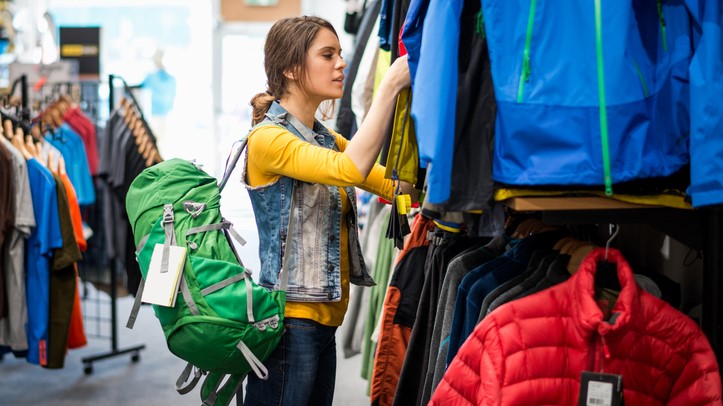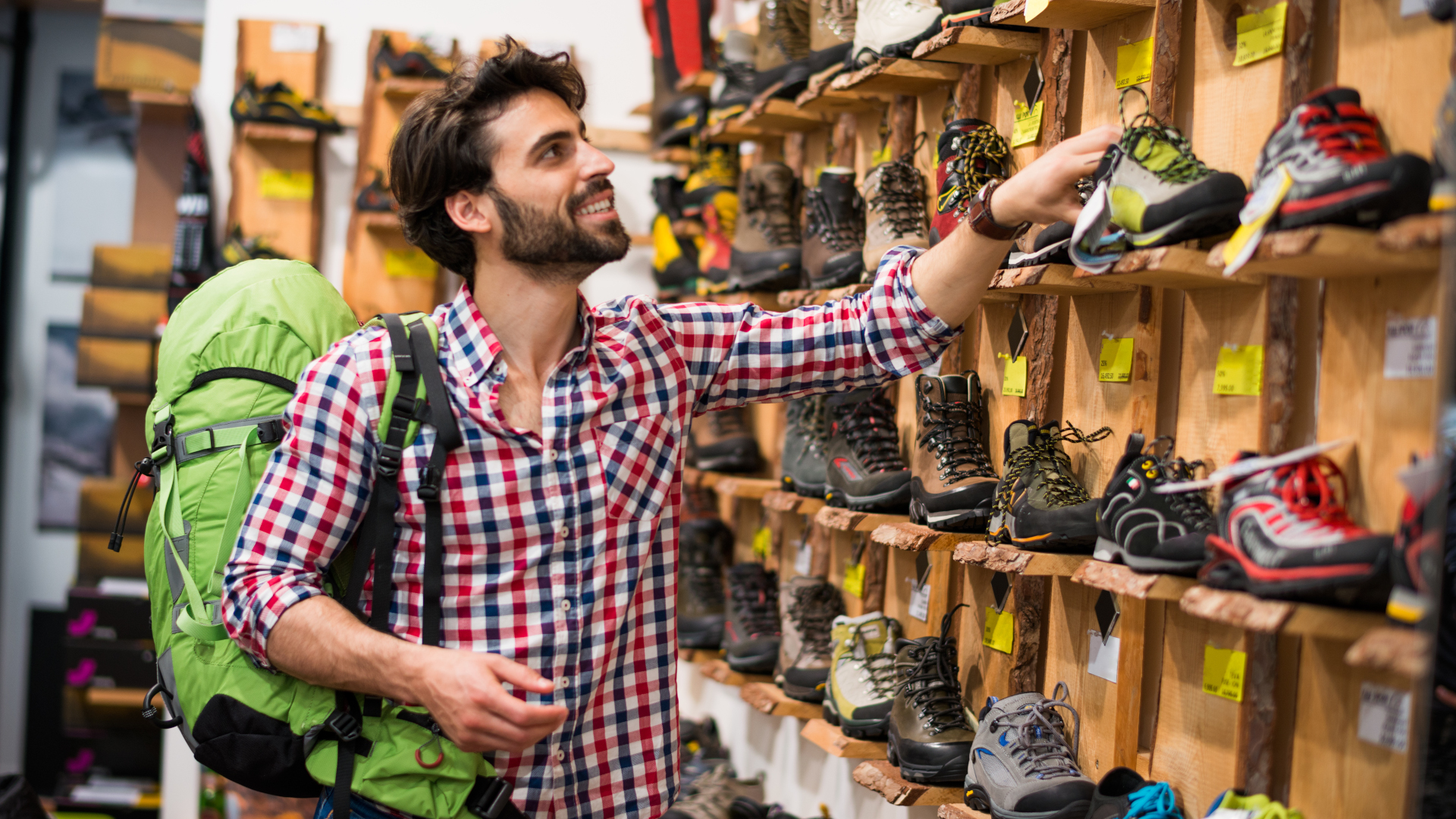Do you really need to buy gender-specific outdoor gear for the best performance?
We speak to an outdoor gear expert to find out when it’s worth shopping for gender-specific gear, and when unisex kit will work just as well

The first time I realized that shopping for outdoor gear was complicated, I was in the legendary Paragon Sports on Broadway in New York City. It must have been around 2009 and, while I’d been hiking since my early teens, until then I’d always just worn whatever gym gear I happened to own to get out on the trail.
But I’d met someone I liked in Vail, Colorado, was eyeing a move out to the Rockies, and had discovered that my cotton yoga pants and Nike running shoes might not cut it at high altitude. So I was in the market for a technical fleece jacket (after wearing my trendy Converse Fleece bought for a trek across Lapland for at least a decade) and a decent hiking backpack.
The helpful shop assistant talked to me all about what types of activities I was planning on doing, where I was going to do them and the technical specs of various items I might consider, including the differences between men’s and women’s models. An hour later, I left with my first women’s North Face fleece (stolen a couple of years later from a Boulder yoga studio) and a unisex Kelty backpack which I still own.
Fast forward 15 years and I still tend to mix and match when it comes to so-called gender-specific gear (that is actually sex-specific, if we’re being specific). I’m 5’4” tall and reasonably lean so I tend to shop women’s clothing, even though I usually prefer the color of men’s styles, but when it comes to other gear like backpacks and sleeping bags, it’s never occurred to me not to buy unisex.

But should we always be buying gender-specific gear? Not necessarily, according to Lorna Preston, Marketing Manager at outdoor retailer Trekitt.
“The main thing when buying new outdoor gear is to find the product that offers the best fit for your individual body shape, regardless of the gender it's intended for.”
Any gender-specific gear is likely to be designed based on generalizations about male and female body types, such as males being taller and having broader shoulders and women being shorter and having wider hips. But of course, these are generalizations so you actually need to shop for the body that you have, not the one you want or the one that designers think you should have.
Advnture Newsletter
All the latest inspiration, tips and guides to help you plan your next Advnture!
“Both in gender-specific gear and with unisex products, you’ll find fit really differs between brands so it’s always worth trying on a range of items to find the one that fits you best.”
That said, I wanted to know if there are specific products that are best bought sex-specific, and it turns out that hiking boots often (but not always) do differ in design and fit as well as sizing.
“The biomechanics and body shape tend to differ between men and women. Women often have narrower feet and higher arches than men and female-specific outdoor footwear is crafted with this in mind.”
If you, like me, have a non-wide foot and a high arch, you might want to take a look at our guide to the best women’s hiking boots next time you need to replace your old hikers. And if you’re reading this as a female and know that you have wide feet, low arches and usually hate hiking boots because they're so uncomfortable, it’s possible that a men’s boot will work better. It’s worth understanding exactly what makes the two different, and of course remember that some brands are known for wider boots while others seem to target narrow feet.

Backpacks are another product where it’s helpful to understand the difference between those intended for men and women’s backpacks, especially if you’re planning on a long trek carrying a lot of gear where comfort and efficiency are vital.
“Larger trekking packs are also often offered in gender-specific models as fit is more important when carrying heavier loads. Women-specific packs often have specialist backsystems with narrower shoulder straps and hip belts optimized for wider hips,” explains Preston.
Though early attempts at female-specific outdoor gear could largely be reduced to what widely became known as “shrink it and pink it,” Preston notes that a lot of improvements have been made in this department in recent years. Today, many female-focused designs offer repositioned seams or pockets that enhance comfort or practicality, or narrower designs that are optimized for a female body shape.
Just because gear is designed to account for anatomical differences, however, doesn’t mean that you’ll notice the difference enough to make it a top factor when choosing gear. Take sleeping bags, for example. Before I gave up sleeping bags altogether in favor of my camping quilt, I camped for years with my GoLite unisex bag and had no problems.
“Women tend to sleep in a different way and also run a little colder than men so a woman-specific sleeping bag is designed with this in mind, however, it’s not likely to make the same level of difference as a walking boot,” says Preston.
In other words, if you find an excellent deal on a unisex sleeping bag, or even one intended for the opposite sex and it fits your requirements for comfort rating, take the deal.

This rule even applies to clothing, as Preston explains that at least more casual gear like T-shirts, shirts and pullovers will work fine regardless of gender specification, while if you find a beanie hat or other accessory that claims to be gender-specific the only difference is likely to be color.
For everything else, though, there are differences in design such as shorter back lengths, higher chest volume and different shoulder constructions in clothes that you wear on your top half, such as base layers, fleeces and waterproof jackets that might influence performance. Keeping these details in mind will help you figure out what clothing might work best for your body type, and trying pieces on first is really the only way to know if they’re going to work for you.
“The number one thing to consider is the functionality of whatever you’re buying. So whether it fits well and will keep you comfortable during long days on the hill,” concludes Preston, who recommends doing some lunges or stretches when trying on gear to test out how comfortable it will be when you’re hiking.
“Also make sure that what you’re choosing will meet the criteria of your planned adventure. Beyond color, brand and gender, look for reliable materials, well-thought-through design and make sure it has the features you’ll need.”
Julia Clarke is a staff writer for Advnture.com and the author of the book Restorative Yoga for Beginners. She loves to explore mountains on foot, bike, skis and belay and then recover on the the yoga mat. Julia graduated with a degree in journalism in 2004 and spent eight years working as a radio presenter in Kansas City, Vermont, Boston and New York City before discovering the joys of the Rocky Mountains. She then detoured west to Colorado and enjoyed 11 years teaching yoga in Vail before returning to her hometown of Glasgow, Scotland in 2020 to focus on family and writing.

